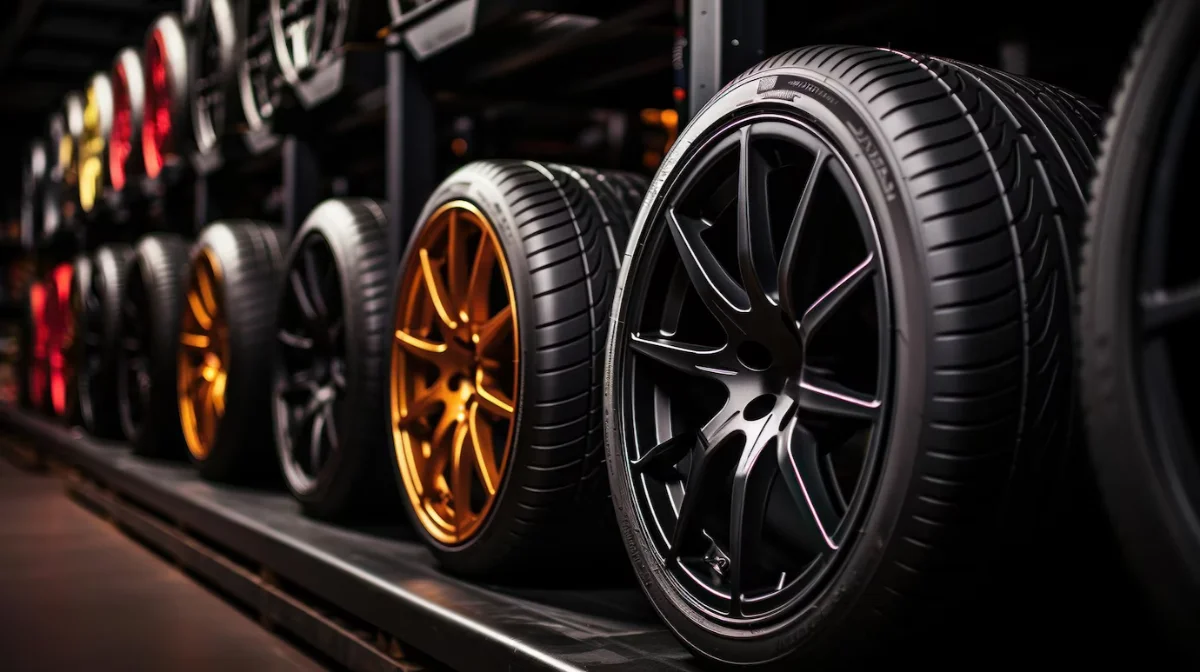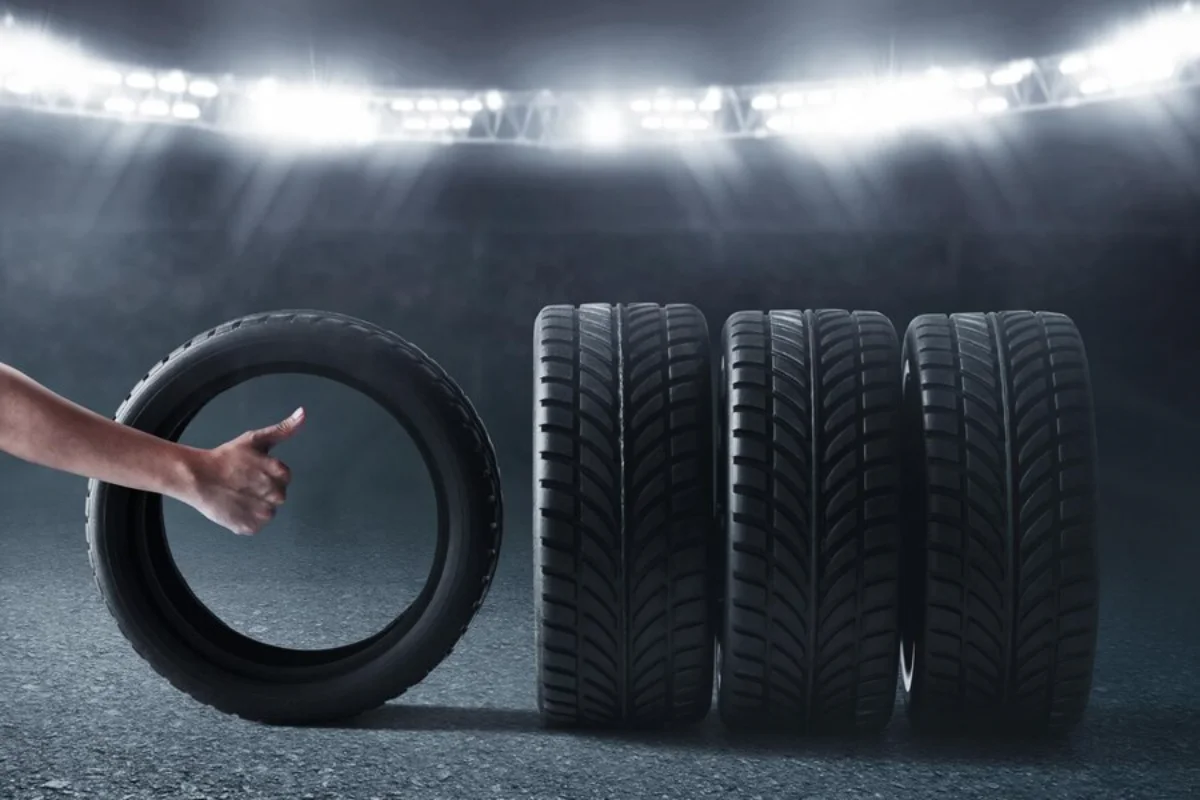
The Best Aftermarket Wheels & Tires for Your Car
Upgrading your car’s wheels and tyres boosts performance and traction and improves your driving experience. Choosing the right performance tyres and wheels can significantly improve your ride. You’ll get a better grip on the track, a smoother experience, and a more stylish look.
In this guide to aftermarket wheels, we’ll examine the best wheel and tyre combos. These will improve grip and traction, help with cornering, and boost performance in different driving conditions.

1. Why Upgrade to Aftermarket Wheels & Tires?
Stock wheels and tyres focus on durability and cost-effectiveness, not high performance. Switching to aftermarket options can offer significant handling, acceleration, and braking advantages.
Benefits of Aftermarket Wheels & Tires:
- Improved Traction – Better grip ensures more control in all driving conditions.
- Enhanced Handling – Lightweight wheels reduce unsprung weight, improving responsiveness.
- Increased Acceleration & Braking – Less rotational mass improves vehicle performance.
- Aggressive Aesthetic Appeal – Custom wheels enhance the visual appeal of your car.
- Optimised Ride Comfort – Performance tyres can reduce road noise and vibrations.
Investing in good wheels and tyres can change the game for car enthusiasts. It helps improve grip and traction.

2. Choosing the Best Performance Tires
Tires are the only part of your car that touches the road. This makes them crucial for performance.
Best Types of Performance Tires:
- Summer Tires – Maximize grip in dry conditions with soft rubber compounds.
- All-Season Performance Tires – Combine grip and longevity for daily driving.
- Track & Racing Slicks – Provide the ultimate traction for track use but wear out quickly.
- High-Performance Winter Tires – Maintain grip in cold and wet conditions.
Best Performance Tire Brands:
- Michelin Pilot Sport Series – A top choice for sports cars and high-performance sedans.
- Bridgestone Potenza Series – Known for excellent dry and wet traction.
- Pirelli P Zero – A high-performance option for aggressive handling.
- Toyo Proxes R888R – Perfect for track days and spirited driving.
- Continental ExtremeContact – A great all-season performance tyre with excellent grip.
Selecting the proper performance tyres for your driving style gives you better traction and stability at high speeds.

3. Selecting the Right Aftermarket Wheels
Upgrading to aftermarket wheels can greatly improve your car’s performance and appearance. Picking the right size, material, and design is key to good performance and appearance.
Key Factors When Choosing Aftermarket Wheels:
- Material – Forged aluminium wheels are lighter and stronger than cast wheels.
- Size & Fitment – Consider diameter, width, and offset to ensure proper fitment.
- Weight Reduction – Lighter wheels improve acceleration and handling.
- Brake Clearance – Ensure enough space for larger brake kits if upgrading.
- Durability – High-quality wheels withstand potholes and track abuse.
Best Aftermarket Wheel Brands:
- BBS – German-engineered wheels known for strength and performance.
- Enkei – Lightweight wheels for racing and street applications.
- Volk Racing (Rays Engineering) – High-quality forged wheels for performance vehicles.
- OZ Racing is popular among motorsport enthusiasts for its lightweight construction.
- HRE Wheels – Premium wheels are known for their craftsmanship and durability.
This guide on aftermarket wheels suggests picking wheels that fit your performance needs and reflect your style.
4. How Wheel Size Affects Performance
Larger wheels may look more aggressive but also impact ride quality and performance.
Pros & Cons of Different Wheel Sizes:
Smaller Wheels (15″ -17″)
- Improve acceleration and ride comfort
- Less expensive tyres
- Less grip and cornering ability
Medium Wheels (18”-19″)
- Best balance between grip and comfort
- Widely available performance tyres
- Slightly heavier than smaller wheels
Large Wheels (20″ and above)
- Maximum traction for high-performance applications
- Improved cornering stability
- Heavier, which may reduce acceleration
- Higher risk of pothole damage
Pick the right wheel size to boost car grip and traction. This choice improves handling while keeping comfort intact.
5. Tire Width and Aspect Ratio: Maximizing Grip
Tire width and aspect ratio are major factors in in-car grip and traction. Wider tyres touch the road more, which gives them a better grip. Lower-profile tyres help with cornering stability.
How to Choose the Right Tire Width:
- Narrow Tyres (195-225mm) – Best for fuel efficiency and winter conditions.
- Mid-Width Tires (235-275mm) – Ideal for sports sedans and daily-driven performance cars.
- Wide Tires (285mm+) – Maximize traction for high-horsepower vehicles.
Aspect Ratio Considerations:
- Low Profile (30-40 series) – Offers better handling but can make the ride harsher.
- Mid Profile (45-55 series) – A balance between comfort and performance.
- High Profile (60+ series) – More comfortable but reduces handling precision.
To boost traction, choosing the correct width and aspect ratio is crucial.
6. Wheel Offset and Its Impact on Handling
Wheel offset determines how far the wheels sit inside or outside the fenders. Choosing the correct offset affects stability and cornering behaviour.
Types of Wheel Offsets:
- Positive Offset – Wheels sit further inside the fender, which is common in OEM setups.
- Zero Offset – The wheel hub is centred, providing a balanced look.
- Negative Offset – Pushes the wheels outward for a wider stance, improving grip but requiring fender modifications.
For enthusiasts following this aftermarket wheels guide, a slight negative offset is best for improving stability and handling without excessive modifications.
7. Performance Tire Maintenance Tips
Maximising the lifespan and effectiveness of best-performance tyres requires regular maintenance.
Tire Maintenance Tips:
- Check Tire Pressure Regularly – Underinflated tires reduce performance and efficiency.
- Rotate tyres Every 5,000-7,000 Miles – Ensures even wear and extends lifespan.
- Balance & Align Wheels – Prevents uneven tire wear and improves handling.
- Inspect Tread Depth – Replace tyres when the tread depth is too low for optimal grip.
Proper tyre maintenance ensures your investment in aftermarket wheels and tyres lasts longer and performs at its best.
Conclusion: The Best Wheel & Tire Upgrades for Performance
Upgrading to the best performance tyres and aftermarket wheels is a great way to enhance your car’s grip and traction. Pick good tyres, light wheels, and the right fit. This helps with handling, acceleration, and braking.
Are you upgrading for street performance, track racing, or daily driving? Choosing the right wheels and tyres can boost your vehicle’s performance and appearance.
What wheel and tyre upgrades are you considering? Share your thoughts in the comments below!


